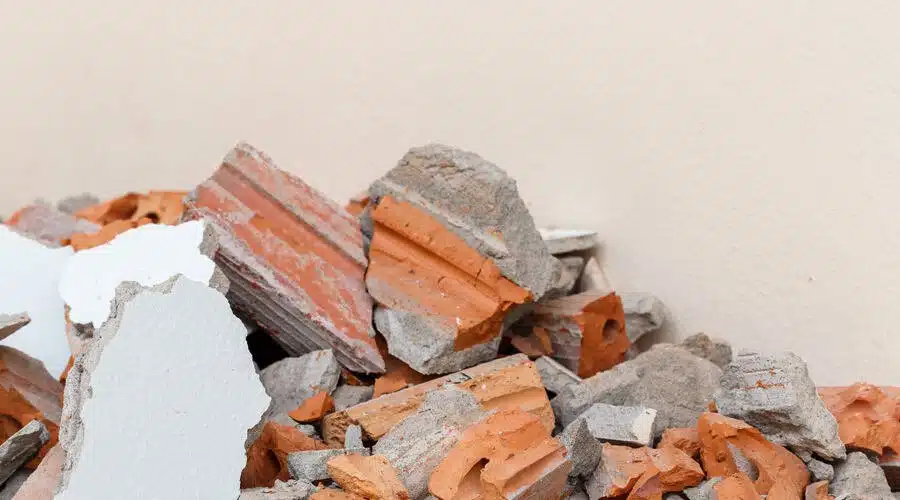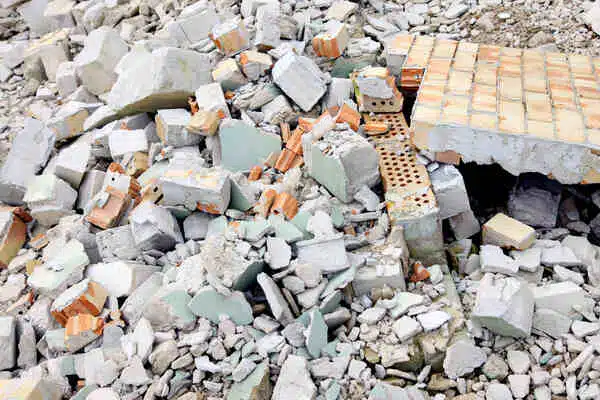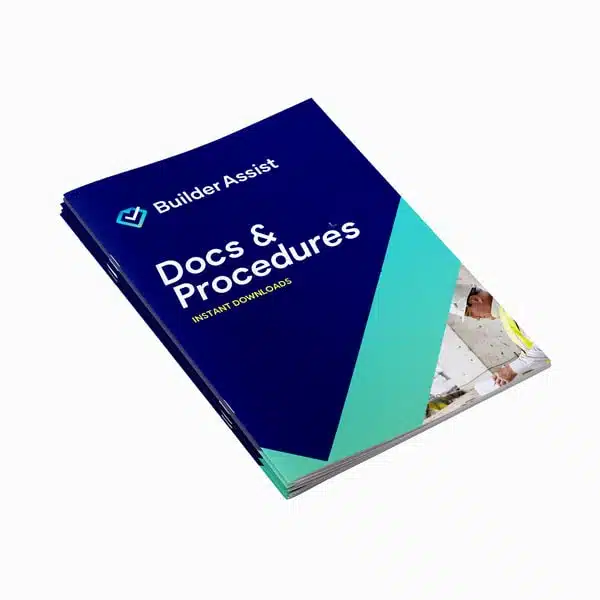
Construction Waste Management Plans outline strategies that ensure waste products are correctly managed during construction projects. For example, sorting, recycling and correct waste disposal, which in the long run reduces a company's environmental footprint.
A construction Waste Management Plan helps you take extra steps to reduce waste. It contributes to overall waste management processes in Australia, and most importantly, reduces your company's impact on the environment.
A construction Waste Management Plan:
- Outlines your project’s goals and objectives for waste management.
- Lists key personnel responsible for ensuring waste management procedures are followed and reviewed.
- Provides estimates of the types of waste (with consideration of hazardous or contaminated waste e.g. asbestos or contaminated soil) and the volume of waste generated.
- Outlines the waste management process for the project, including how waste is measured, recycled and disposed of in an environmentally conscious manner.
- Includes how waste is managed. Whether it’s required to be transported to a waste management facility, or if it is recycled and/or repurposed on site.
- Outlines how training is rolled out to educate personnel on waste management processes, and the importance of adhering to it.
- Outlines how the waste management plan is reviewed, including the frequency of reviews and how documentation is stored.

The construction industry contributes significantly to the generation of waste in Australia.
Construction Waste Management Plans outline strategies that ensure waste products are managed correctly during construction projects. Importantly, it reduces a company's carbon footprint.
What do Australian Councils require from builders?
For the most part, local Councils in Australia expect a certain level of consideration around waste management and disposal from building sites. In most cases, Councils require a construction Waste Management Plan to be submitted with a Development Application (DA). This allows Councils an understanding of how waste reduction and management is considered, and to assess it against their own efforts to reduce waste and maximise reuse and recycling.
Does this differ across states and territories?
The National Waste Policy was agreed upon by all national environment ministers in 2009 as the national framework for waste management and resource recovery. It provides the basis for collaboration among stakeholders to deliver effective approaches to national waste issues, to avoid the generation of waste where possible, reduce the amount of waste for disposal, and manage waste as a resource to deliver economic, environmental and social benefits.
However, each state and territory follow its own legislation for waste management and resource recovery. We’ve listed the legislations below, and links to the regulatory bodies for each state and territory.
New South Wales
- Protection of the Environment Operations Act 1997
- Waste Avoidance and Resource Recovery Act 2001
Australian Capital Territory
Department of Climate Change, Energy, the Environment and Water
- Environment Protection Act 1997
- Clinical Waste Act 1990
- Waste Minimisation Act 2001
- Litter Act 2004
- Dangerous Substances Act 1990
Northern Territory
- Waste Management & Pollutions Control (Administration) Regulations 1998
Queensland
Department of Environment and Science
- Waste Reduction and Recycling Act 2011
- Environment Protection Act 1994
- Environment Protection Regulation 2008
- Environment Protection (Waste Management) Regulation 2000
Tasmania
- Environmental Management and Pollution Control Act 1994
- Environmental Management and Pollution Control (Waste Management) Regulations 2010
- Environmental Management and Pollution Control (Controlled Waste Tracking) Regulations 2010
Victoria
- Environment Protection Act 1970
- Environment Protection (Industrial Waste Resource) Regulations 2009
- Sustainability Victoria Act 2005
Western Australia
Department of Water and Environment Regulation
- Waste Avoidance and resource Recovery Act 2007
- Waste Avoidance and Resource Recovery Levy Act 2007
- Waste Avoidance and Resource Recovery Levy Regulations 2008
- Environment Protection Act 1986
South Australia
- Environment Protection Act 1993
- Zero Waste SA Act 2004
*Source
Depending on the state or territory, and local Council, waste management requirements can differ. During the planning phase of a project, it’s important to research local government requirements.
Check your state/territory’s regulations and Acts, and liaise with the project’s local Council regarding waste and recycling requirements applicable to your construction project.
Builder Assist has developed a construction Waste Management Plan template for builders. The template provides a platform to assist in addressing Local Council requirements for any state or territory. It is instantly downloadable and easy to edit in Word format.



